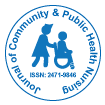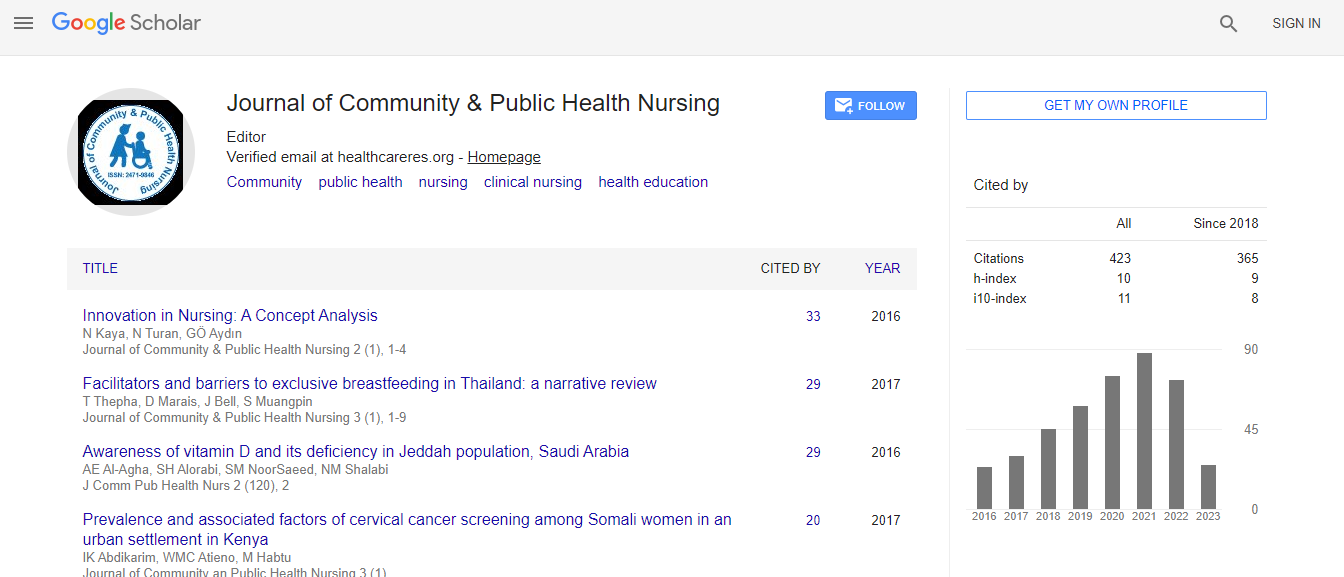Our Group organises 3000+ Global Conferenceseries Events every year across USA, Europe & Asia with support from 1000 more scientific Societies and Publishes 700+ Open Access Journals which contains over 50000 eminent personalities, reputed scientists as editorial board members.
Open Access Journals gaining more Readers and Citations
700 Journals and 15,000,000 Readers Each Journal is getting 25,000+ Readers
Google Scholar citation report
Citations : 739
Journal of Community & Public Health Nursing received 739 citations as per Google Scholar report
Journal of Community & Public Health Nursing peer review process verified at publons
Indexed In
- Google Scholar
- CiteFactor
- RefSeek
- Hamdard University
- EBSCO A-Z
- OCLC- WorldCat
- Publons
- Geneva Foundation for Medical Education and Research
- ICMJE
Useful Links
Recommended Journals
Related Subjects
Share This Page
Implementing a two year longitudinal interprofessional collaborative care curriculum (IPCC) across five colleges: Opportunities and lessons learned
Joint Event on 21st World Congress on Registered Nurse and Nurse Practitioner Meeting & Nursing Education and Management
Fiona Jensen
University of Manitoba, Canada
Posters & Accepted Abstracts: J Comm Pub Health Nursing
Abstract
Background/Rationale: Interprofessional education is foundational to graduating healthcare practitioners in preparation for collaborative practice. According to the Canadian Interprofessional Health Collaborative (2010), collaboration requires seven competencies: team functioning, role clarification, interprofessional communication, client/family/ community-centered care, interprofessional conflict resolution and collaborative leadership. An innovative two-year interprofessional collaborative care curriculum was implemented in September 2016 at the University of Manitoba Rady Faculty of Health Sciences involving beginning health profession students in 9 programs (N= 341) in the Colleges of Nursing, Medicine, Rehabilitation Sciences, Dentistry, and Dental Hygiene. College of Nursing (CON) students located on another campus, and beginning a revised nursing curriculum, formally began the IP longitudinal curriculum in September 2017. Methodology: Students from the five Colleges were placed in interprofessional learning (IP) cohorts in the first year of their respective programs and progressed through the 2 year IPCC curriculum together. Each term began with a facilitated face to face session followed by two online discussions, an end of term reflection activity on interprofessional team collaboration, and a group assignment. In the CON, students entered the IPCC curriculum at two points (September and January) due to two intakes in the academic year. The activities in the IPCC curriculum were embedded in courses within the respective colleges and programs. While learning about IP the competencies critical to collaboration, the curriculum content focused on two main themes: population health (Public Health Agency of Canada, 2001) in the first year and patient safety in the second year. Results/Outcomes: Multiple methods were used to evaluate the program from the student’s perspectives. Students completed the Interprofessional Socialization and Valuing Scale (ISVS- 9) at the beginning of the IPCC curriculum, at the end of year 1 and at the completion of the 2-year collaboration activities. The need for early and on-going communication around the overall curriculum map; the desire for the more face-to-face time; and the challenges of blended learning were overarching themes. In the College of Nursing, with two intake points and a location distant from the other colleges, students valued learning together in interprofessional student teams, yet some unique challenges for team learning and team cohesiveness occurred.Biography
Fiona Jensen is a Senior Instructor in the Rady Faculty of Health Sciences College of Nursing, at the University of Manitoba, Winnipeg, Canada. She is one of five college representatives who developed and implemented a 2- year interprofessional collaborative care curriculum for all incoming health profession students at the University of Manitoba. She teaches in the College of Nursing where her interests are in the areas of Gerontology and interprofessional collaboration and education.
E-mail: fionajensen54@gmail.com

 Spanish
Spanish  Chinese
Chinese  Russian
Russian  German
German  French
French  Japanese
Japanese  Portuguese
Portuguese  Hindi
Hindi 
